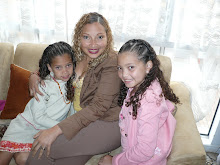How can you recognize it?
Example:
- This verbal tense can be found in sentences where we identify a subject, a verb in its simple or infinitive form and complement.
- I wacth tv every afternoon.
What is it used for?
- To talk or write about common or everyday actions.- To denote instictive actions (like and dislikes, feelings, knowledge, perceptions.)
Example:
- I go to the movies once a week. - She likes the romantic music.
AUXILIARY DO - DOES
STRUCTURE:
Affirmative: Subject + verb (present) + complement
I play soccer She plays soccer
Negative: No, Subject + Auxiliary + not +verb (present) + complement
I don't play soccer She doesn't soccer
Interrogative: Auxiliary + Subject + verb (present) + complement?
Do you play soccer? Does she play soccer?
Spelling rules for the simple present tense of the third singular person:
a) Add “s” for most verbs
Work - Works
Make - Makes
Ride - Rides
Return - Returns
b) Add “es” for vebs that end in ch, s, ss, sh, x, z, o
Go - Goes
Watch - Watches
Pass - Passes
Rush - Rushes
Buzz - Buzzes
c) Change the “y” to “i” and add “es” when the base form ends in a consonant + y
Study - Studies
Hurry - Hurries
Dry - Dries
Cry - Cries
Do not change the “y” to “i” when the base form ends in a vowel + y. Only add “s”
Play - Plays
Enjoy - Enjoys
d) A few verbs have irregular forms.
Be - Is
Have - Has
domingo, 3 de mayo de 2009
Suscribirse a:
Enviar comentarios (Atom)

No hay comentarios:
Publicar un comentario